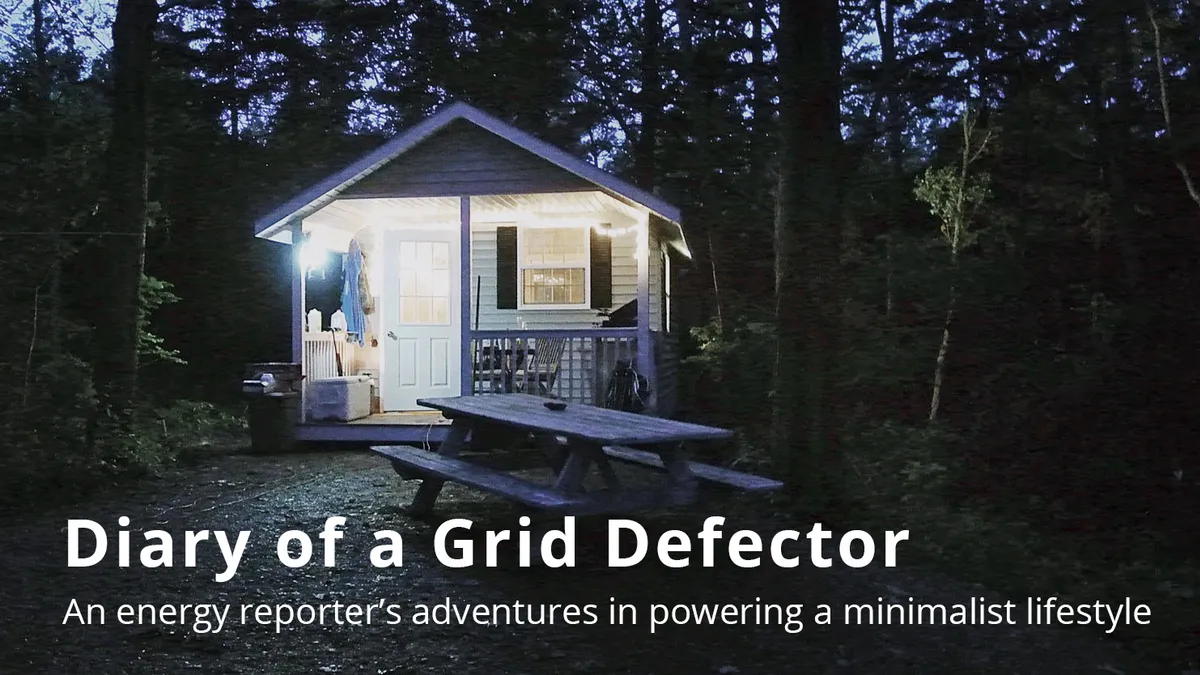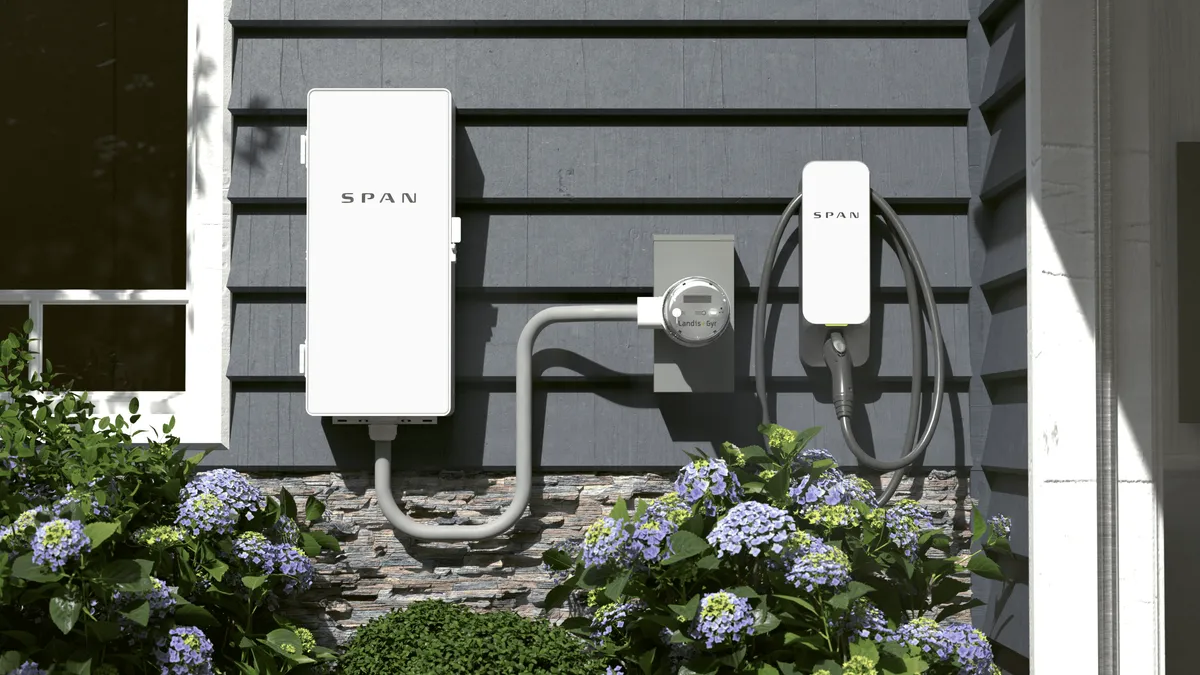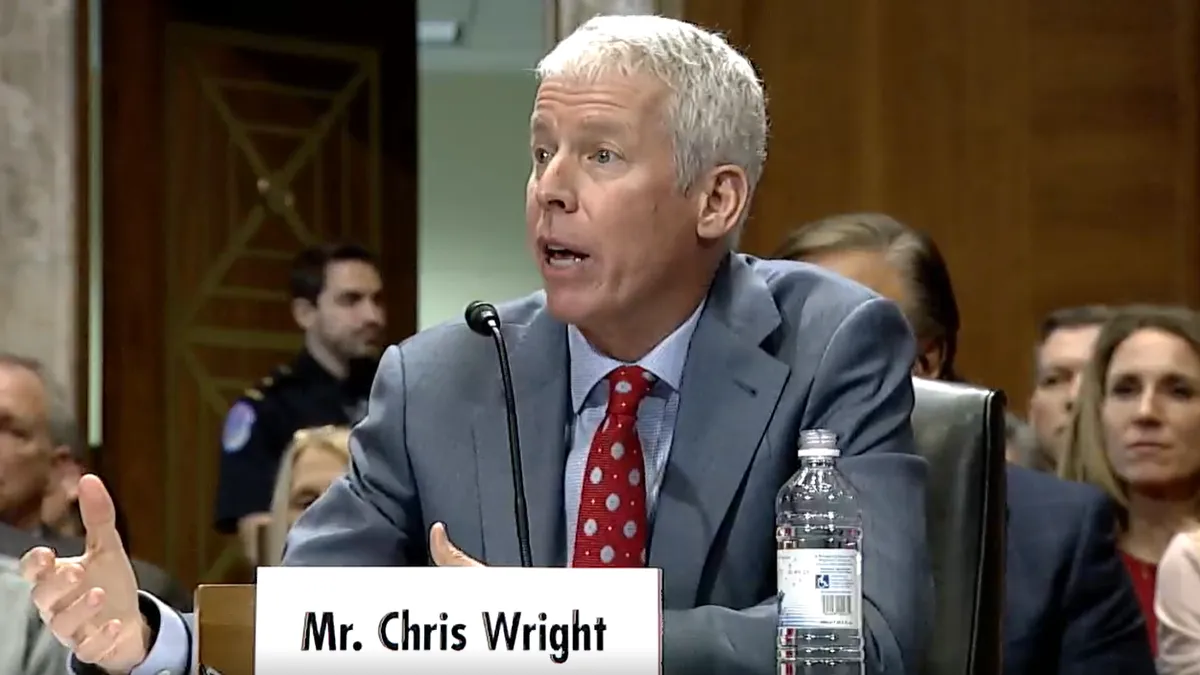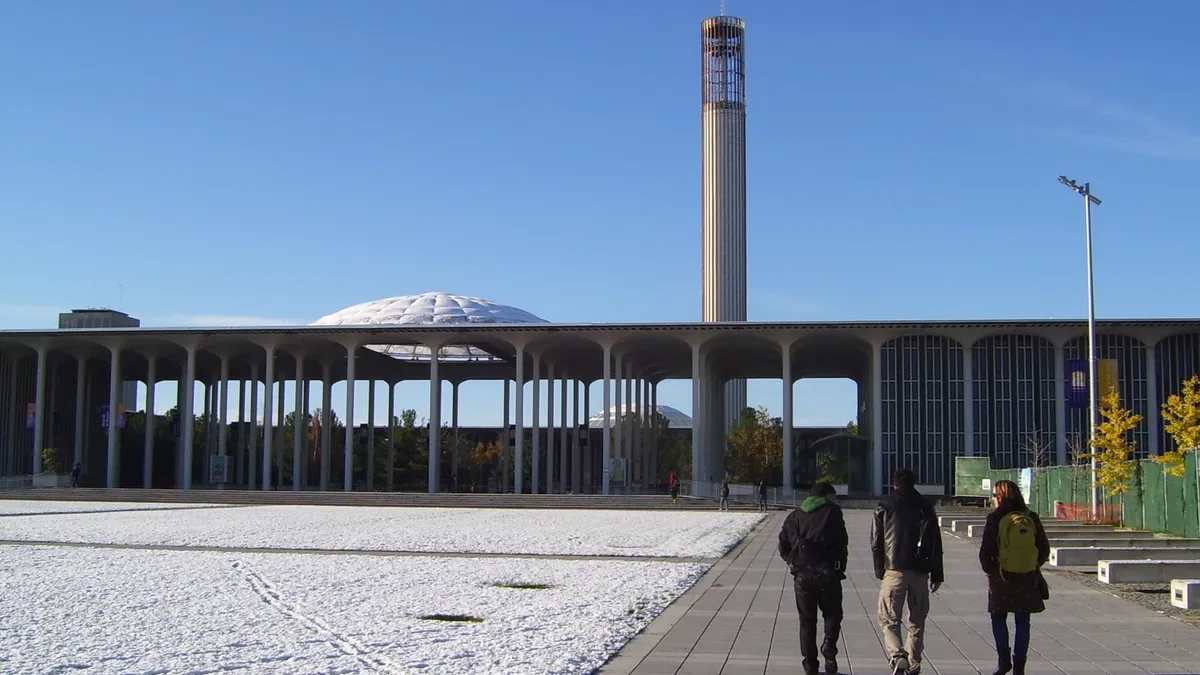Editor's Note: The following is the fourth installment in an ongoing Utility Dive series, "Diary of a Grid Defector." Each month, Utility Dive's Robert Walton will report on his adventures setting up an off-grid cabin and exploring developments in distributed energy in upstate New York. We hope his experiences will give our readers an insightful, first-hand look at what life is like at the edge of the electricity system—and how the revolution in distributed energy technologies is changing it. His first three installments can be found here and here and here.
Greg Thomas likes to talk about building survival strategies.
”They evolve,” he says.
As the CEO of Performance Systems Development Consulting (PSD), an efficiency consultancy in Ithaca, N.Y., Thomas should know. His company's offices inhabit an old airplane factory, saved from destruction when it was repurposed. And he spends much of his days thinking about building efficiency – not just how to maximize it, but how to convince consumers to value it.
We talk a lot about energy efficiency these days, but until recently, it was a pretty abstract concept for me. Living in large city apartment buildings, I had no control over efficiency. Which was fine; I'd just leave the air running in the summer, along with the windows open, trying to hit that perfect temperature.
I can't tell you how upset I was when building management installed direct control thermostats one year, ending my lovely Washington, D.C. July peak hours with the fan set at 65.
But it's a different world now. How efficiently I use energy, how buttoned up I can get this tiny cabin, has direct impacts on my life. Like how much wood I have to chop, how often I get up to feed the stove at night, and how frequently the battery system runs out of juice.
So when I sat down to lunch with Thomas not long ago, I kept thinking about our building efficiency conversation in terms of my own tiny cabin – and how incredibly, impossibly, comically inefficient it is compared to today's modern homes.
There are homes you can heat passively – by body heat, or with as little energy as a single gas burner. You have to circulate in air. My cabin might have an R-50 roof, but so far the cat is using a 6x6 window gap for a door, and I've yet to finish sealing the masonry where my stovepipe exits. As I write this, there's a nice 45-degree breeze rushing over my feet while the stove cranks out heat. My toes are cold but the top of my head is sweating.
It's a work in progress.
Little fiefdoms
“The industry changes slowly because utilities are like little fiefdoms,” said Thomas. They may create a five-year resource plan and then change it, he explained, making investment difficult for private firms.
Looking to fix that problem, Thomas' firm is taking a more market-based approach. In partnership with Tompkins County and Cornell University, PSD is proposing a mandatory energy-efficiency rating that would be attached to all home sales for an area containing five municipalities, including Ithaca.
Home efficiency scores already exist, and their mandatory inclusion in sale data is common in Europe. The U.S. Department of Energy has its own home score program, but according to Thomas, the compacted ratings scale and voluntary nature of the ratings limit its usefulness.
“It's a scale of 1 to 10,” he said. “Most new homes are very efficient and score at the top of the range. There's very little granularity.” Combined with the voluntary nature of the program – I wouldn't want to participate right now if I was trying to sell this cabin – the ratings can make overall home efficiency look pretty good.
So the task for PSD Consulting is two-fold: create a system that will accurately tell the tale of a home's efficiency, and then convince towns to use it.
Down the hall from Thomas' office, in a large hanger that looks like every tech startup ever (except that after two decades in Ithaca, PSD is not a startup), about a dozen engineers are working to develop efficiency systems and ratings. Wearing sandals and concert t-shirts, heads down, they are overlaying data sets from different programs in an effort to generate the Tompkins County system.
But once the system is created, the real task may be in selling community officials on it. A mandatory program will have to be funded, and there are concerns about how it would impact lower-income homeowners.
We spend 90% of our time in buildings
A couple of weeks later I drove into town to attend an Ithaca Town Council meeting. There were maybe 15 people in attendance, most there to comment on a budget issue. But the council led off with a presentation on the home efficiency program, given by PSD's Emelie Cuppernell. The company describes her as a "building scientist,” with a background in physics and a long resume of home efficiency work.
In a quick and to-the-point 15-minute presentation she laid out the program basics for the seven-member town board. “We spend 90% of our time in buildings,” she explained, highlighting the importance of efficiency and the rating. Much of the Tompkins County building stock is aging, she says, showing the council examples of other home efficiency scores and explaining how they could become a major selling point in the real estate market.
There is an awkward silence after her presentation, followed by the inevitable, absolutely, no-way-around-it, until-the-ends-of-the-earth question: “So who pays for it?”
A simple rating could cost about $300, Cuppernell said. Some programs already in operation are funded by utilities, voluntary and paid for by the homeowner, or are funded by the state or local home performance program. But beyond the cost of the rating, the council was also keenly interested in the proposal's impact on low-income housing, which is often lacking when it comes to insulation and efficient appliances.
PSD is currently working on a voluntary pilot, which could get the more granular home efficiency score into practice before it becomes mandatory.
“This would be preliminary, prior to the mandatory [program], to test the waters and evaluate local readiness,” Cuppernell said. “We need to get the appropriate infrastructure in place, provide public education on the value of a rating, and in general, get the market ready.”
That other 10%
I keep thinking about the 90% figure that Cuppernell dropped in the council meeting. As shocking as it looks, it doesn't surprise me at all. Living in Washington, some days my “outside time” was limited to the bus stop.
In upstate New York, though, preparing for winter, getting this cabin insulated and walled, clearing land, chopping wood, installing a stove and chimney, I've spent a lot of time outdoors. More than ever, I suppose. But around here, the average high temperature in January is still below freezing, and so I suspect that will change. Which makes those masonry cracks (and the cat's door, as ludicrous as it sounds) pretty significant.
I'm not a mason or carpenter. This is all learn-by-doing for me, which is much more fun but maybe ten times less efficient. I might measure twice, but I've yet to build anything once. Trial and error has come to rule my life.
We got our first freeze a couple of weeks ago, and in the morning, the roof of the cabin was coated in a layer of frost. But as I went outside for more firewood later in the day, I noticed a streaking on the roof – lines where overlapping insulation allowed heat to escape and melt ice faster. The studs in the roof are two feet apart but insulation comes in 18-inch rolls, so the overlap was inevitable.
Trial and error; learn by doing. But in the end, just get it done. Winter is around the corner, and I'm about to become a 10-percenter again.
The editors of Utility Dive would love to hear feedback on this new series from you. Did you find Robert's dispatch interesting? Useful? Applicable to your job? Or maybe you simply have a tip for his new, off-grid lifestyle. Whatever it may be, send us an email at [email protected].






















